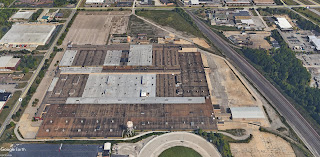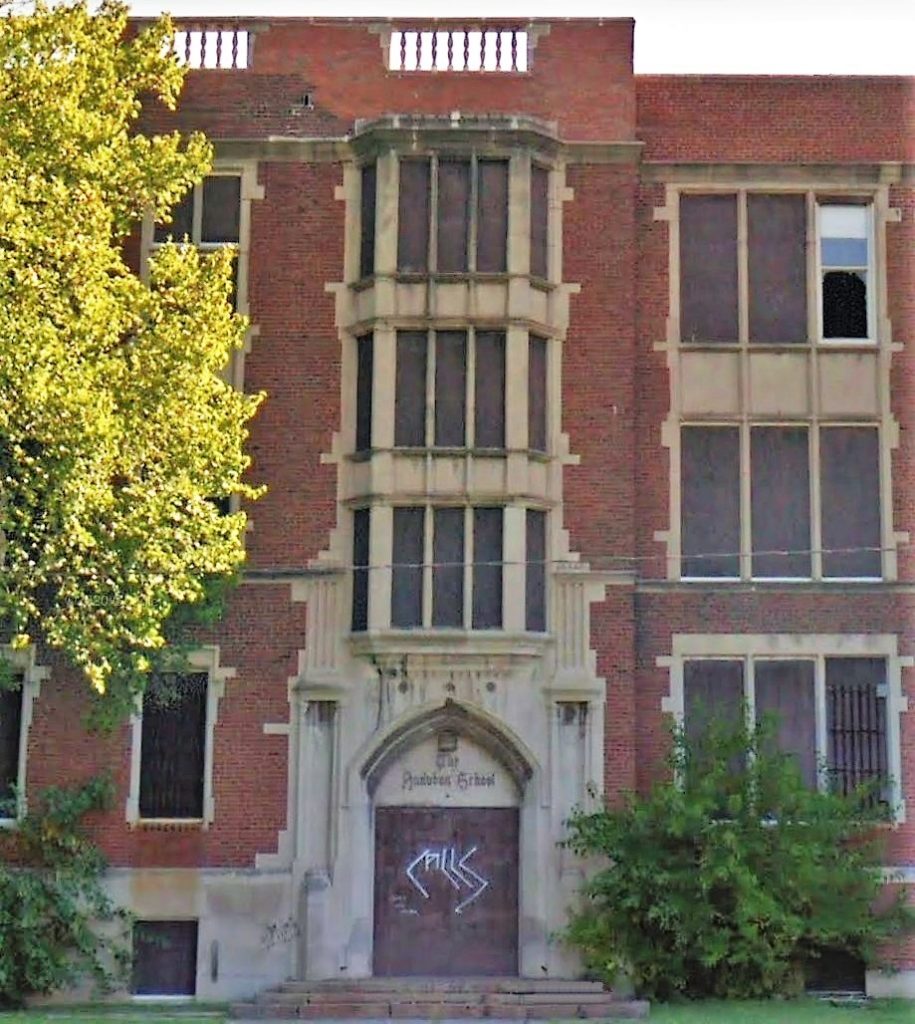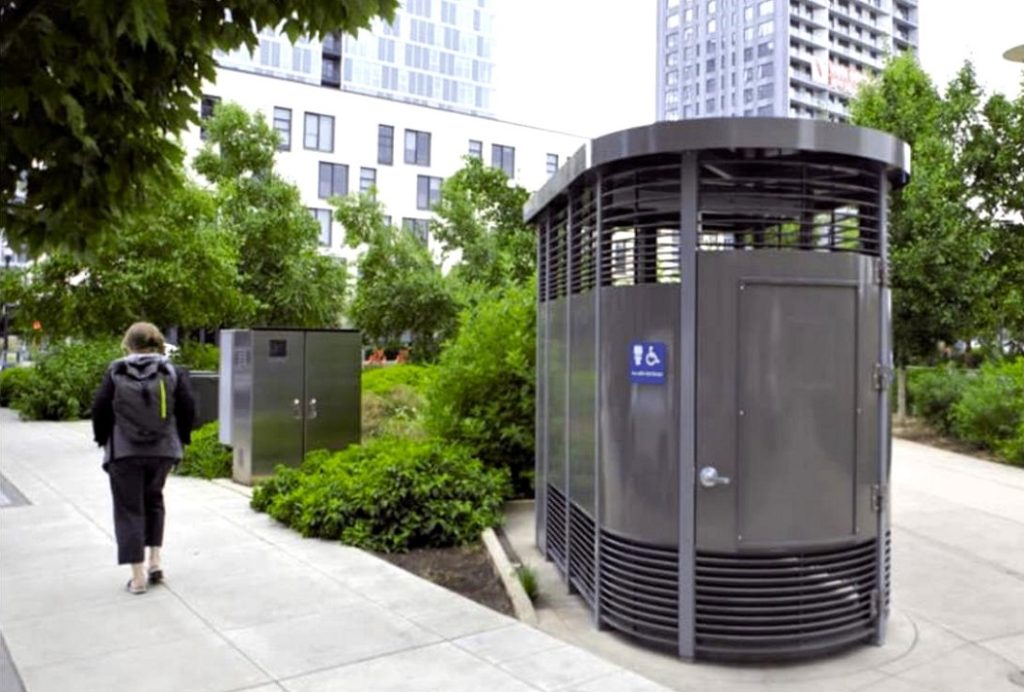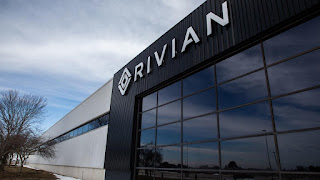 |
| This is the office portion of Rivian’s lone production facility, a former Mitsubishi plant in Normal, IL (Rivian). CLICK IMAGES TO ENLARGE THEM |
Since spring, Greater Clevelanders have been hearing that the sale and reactivation of two massive, idled auto plants in the area to a single buyer will be a “game-changer” for the economy of this region. There were more than 15 potential buyers with many showing interest in reusing both factories in a positive way.
Ford has since short-listed the potential buyers and will soon select a winner. I took a stab last May at who one of those buyers might be. While I’m pretty sure I missed then (Tenneco’s finances have fallen sharply in the past year), I feel much more comfortable in my aim in this article.
Previously, I completely overlooked some major news announced only a month before my May article. That news and much more since then points strongly in one direction….
A possible buyer of Ford Motor Company’s Brook Park and Walton Hills plants?could be Rivian, a start-up SUV and truck manufacturer whose vehicles are powered by electric engines. They have impressive performance (0-60 mph in three seconds) and impressive ranges of 400 miles or more per charge.
Word is that a formal announcement of who will buy the two legacy auto plants will be made in two months or less. The hiring of 2,000 to 3,000 workers would follow a two- to three-year renovation and retooling of both factories.
Why Rivian?
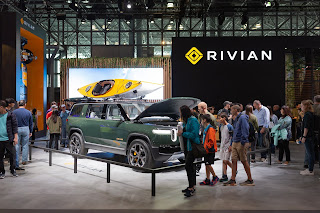 |
| Prototypes of Rivian’s two launch vehicles, a seven-passenger SUV and a five-passenger pickup — both electric — were a hit at the New York Auto Show earlier this year (Rivian). |
First off, Rivian, founded in 2009 and headquartered in the Detroit suburb of Plymouth, has come out of nowhere. But, already, it is a multi-billion-dollar company. It has raised $2 billion in equity since 2017 and just got an order from Amazon to build $10 billion dollars worth of electric delivery trucks.
So, $12 billion — not bad for a company that has made only prototype vehicles so far.
Rivian’s production line won’t start churning out its launch products — the five-passenger R1T pickup and seven-passenger R1S SUV — until late-2020. And that doesn’t include its new 100,000-truck order from Amazon. Nor does it include Rivian’s innovative, flexible chassis, dubbed the “skateboard platform” (the chassis looks like a skateboard!) that will be built en masse for the foundation of another automaker’s huge EV program (more later).
Some will ask why would Rivian buy two huge factories in Northeast Ohio when it has already invested $200 million to reactivate a 2.6-million-square-foot former Mitsubishi auto plant it acquired in 2017 on the northwest side of Normal, IL. The company will employ about 1,000 people there.
As big as that plant is, it may not be big enough for what may be asked of Rivian in the coming years. At its peak under Mitsubishi, the Normal plant produced about 200,000 cars a year. Under Rivian, it expects to produce only about 50,000 vehicles in its first full year. But that doesn’t quite tell the full story.
For context, consider the 3.7-million-square-foot Ford Avon Lake, OH plant. It produces 370 truck chassis a day. That’s 128,000 to 135,000 chassis per year. That’s just chassis. It also assembles about 15,000 medium-duty trucks per year with their engines and transmissions made in Mexico.
So not only will the Normal plant produce electric trucks. It will also produce the skateboard platform that will be the chassis for Rivian’s two launch trucks, as well as for Amazon’s 100,000 delivery vans as well as Ford’s all-new EV.
That’s a lot of skateboards, and that’s just for the known business. Can the Normal plant handle all of that? And what will business be like in two to three years — also known as the time it will take to reactivate the two Cleveland-area Ford plants?
That means adding millions more square feet to the production process. Ford’s Brook Park Engine Plant No. 2 on Snow Road, closed since 2012, measures 1.7 million square feet and the Walton Hills stamping plant on Northfield Road, closed since 2014, totals 2.1 million square feet.
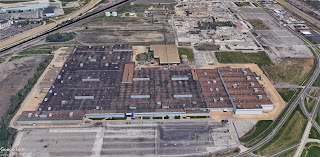 |
| Ford’s 1.7-million-square-foot Brook Park Engine Plant No. 2 (above) that closed in 2000 and Ford’s Walton Hills Stamping Plant (below) that closed in 2015 (Google). |
If so, that could mean Rivian’s chassis plant will be in Illinois, its engine plant in Brook Park and its stamping/body plant in Walton Hills. Sounds like a production line. And we’re talking at a more appropriate scale — not just for production, but also for equity.
Why is Rivian amassing billions in equity and orders merely to spend it on a single, reactivated factory, its growing Michigan headquarters and a California engineering center? It’s not. Those facilities probably don’t account for anywhere near close to the billions in Rivian’s grasp.
That scale of resources probably means a larger scale of capital investment as well as to launch its first production vehicles.
Of course, transportation is a big part of the supplier chain. Interestingly, Rivian’s Normal, IL plant, the Brook Park plant and the Walton Hills plant are all on Norfolk Southern Corp.’s (NS) railroad lines. That means no costly, time-consuming interchanges, least of all through congested Chicago.
And the trio of plants are situated so that NS can run continuous unit trains, each loaded with a thousand or more chassis in one direction and hundreds of finished vehicles in the other. NS-owned railroad yards are in place and in good condition at all three factories. And if NS should ever treat Rivian like a hostage shipper, there are competing mainline railroads nearby to pick up the slack.
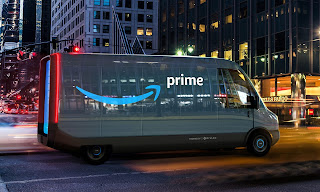 |
| Rivian’s electric delivery truck for Amazon. The online retailer ordered $10 billion worth of these trucks from Rivian, despite that Rivian hasn’t mass-produced any vehicles yet (Rivian). |
Finally, perhaps the biggest reason why Rivian is the likely buyer is because of Ford itself.
The buyer of the Brook Park and Walton Hills plants was never going to be a competitor to Ford. Ford would not hand the keys to so much production capacity to GM, Chrysler, Toyota, Honda or Tesla. It might hand the keys to Volkswagen which announced an alliance with Ford in January.
A source who knows who is on the shortlist to buy the Ford plants wouldn’t say publicly who they are. But he did say who it isn’t, and it isn’t VW “unless they are buying it under another name, but that would be unlikely,” the source said.
The buyer could always be in an unrelated industry. But why sell to an unrelated industry and make money only once when you can sell it to a partner and make money for years and years?
And guess who Ford is a partner to Rivian.
Ford, the nation’s second-largest automaker and fifth-largest in the world made a $500 million equity investment in Rivian in April. That was the big news that I missed a month before I wrote my May blog. That’s just a spark to Ford’s $11 billion venture into the EV field.
Ford and Rivian agreed to work together to develop an all-new, next-generation battery electric vehicle for Ford’s growing EV portfolio. And Rivian will build for itself and for Ford its skateboard platform chassis to be used on several models of EVs. That’s hundreds of thousands of vehicles, possibly including Ford’s new electric Mustang and F-150.
It’s a massive production commitment, one that will require billions of dollars and more production capacity than one auto plant in the flatlands of Illinois. Indeed, it looks increasingly like the two massive, idled auto plants in Greater Cleveland will be reactivated for this game-changing manufacturing future.
END

